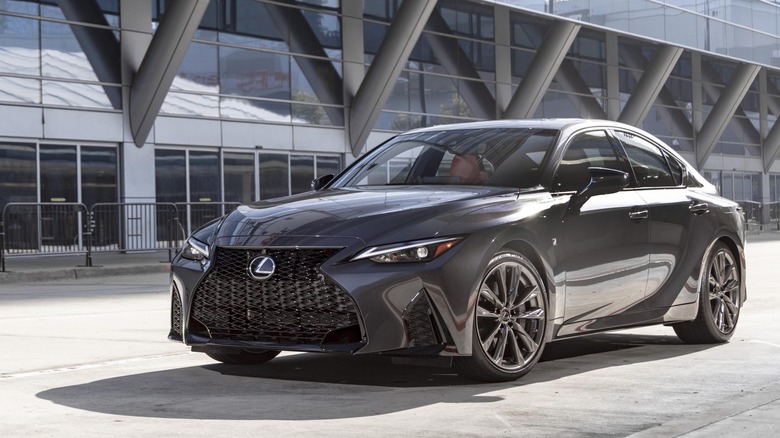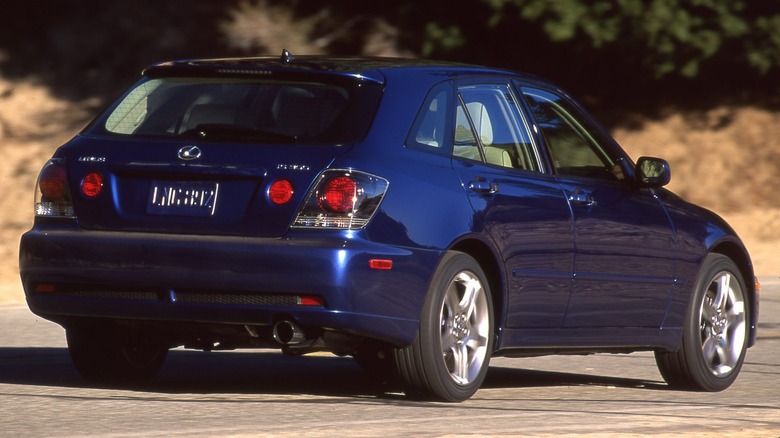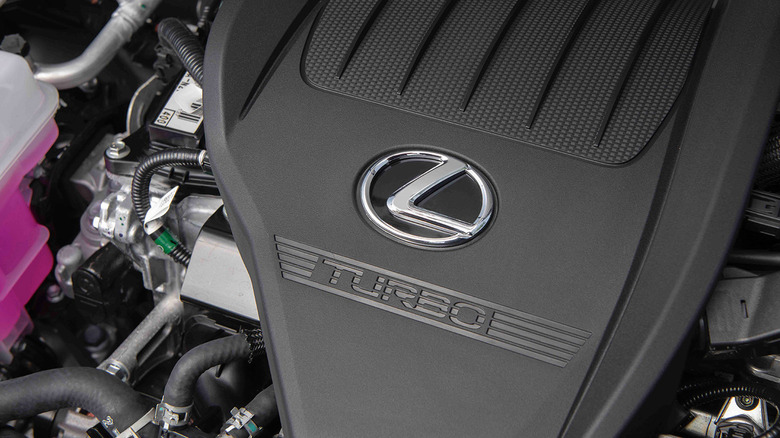How The Lexus IS 300 Engine Has Changed Over The Years
Lexus introduced the IS as its rival to the established German compact executive sedans from BMW, Mercedes-Benz, and Audi. IS stood for "Intelligent Sport," so being an engaging and sporty car was part of its DNA.
One of the most popular engine variants, that offers a great blend of performance and practicality, is the IS 300. Following industry conventions that most automakers adhere to, calling something the 300 used to mean the vehicle was equipped with a six-cylinder engine. However, while that was true for most of the Lexus IS 300's life, the type of six-cylinder engine it uses has changed, and the latest one is actually a four-pot.
Looking at how the Lexus IS 300's engine has changed over time not only gives us a great look at how Lexus as a brand has evolved, but also shows us how the industry as a whole has moved forward. Even though Lexus has typically done things its own way, shunning many industry powertrain trends in favor of its hybrid technology, it seems the automaker has had no choice but to do it like all the other automakers with the most recent IS 300.
Six-cylinder power for the IS 300
The first Lexus IS 300 was launched in 1998 with a 3-liter straight-six engine that had an output of 213 horsepower. This power plant, which was a version of the famous Toyota 2JZ engine, was exceptionally smooth and pleasant to rev out, and it pushed the IS to 60 mph in about eight seconds.
It didn't make quite as much power as in other applications, like under the hood of the fourth-generation Toyota Supra, where turbocharging helped produce over 300 horsepower and a lot more torque accessible from much lower in the rev range. But even without the turbocharger, the engine in the first-gen IS 300 was and still is the darling of many enthusiasts.
For the second generation of the IS nameplate that arrived in 2006, Lexus ditched the IS 300 denomination, replacing it with two six-cylinder models, the IS 250 and IS 350. These had 2.5-liter and 3.5-liter V6 engines, which made 204 horsepower and 306 horsepower, respectively.
Since they had a V6 arrangement as opposed to the older engines' inline configuration, they weren't quite as smooth and sonorous as before, but they still provided plenty of performance. You could also get the smaller engine hooked up to a six-speed manual transmission, but not the more powerful IS 350, which could only be had with an eight-speed automatic.
Lexus brought back the IS 300 name for the third generation of the model, which it launched in 2014. It came with a 260-horsepower 3.5-liter V6 exclusively hooked up to a six-speed automatic transmission.
IS 300 goes four-cylinder turbo
Lexus managed for many years to stay clear of industry trends such as the downsizing and turbocharging of engines, sticking to its larger engines and hybrid tech. However, ever more stringent emissions regulations (especially in Europe) forced the manufacturer to join the mainstream. That's why many of its newest models have turbocharged four-cylinder engines, and one of these models is the fourth-generation IS 300, launched in 2021.
It is motivated by a 2-liter four-cylinder that is turbocharged to produce a healthy 241 horsepower, enough for an acceleration time from naught to sixty in 6.9 seconds, and plenty of in-gear punch thanks to 258 pound-feet of torque delivered at just 1,650 rpm.
Interestingly, if you want an IS 300 with all-wheel drive, you get a completely different engine in it. Instead of the force-fed four-pot, you get the 3.5-liter V6 from the IS 350 variant. However, instead of making 311 horsepower as it does in the 350, it has been detuned to 260 horsepower for the IS 300 AWD (the same output as the third-generation IS 300). Whichever variant you go for, the only transmission is an eight-speed automatic.


